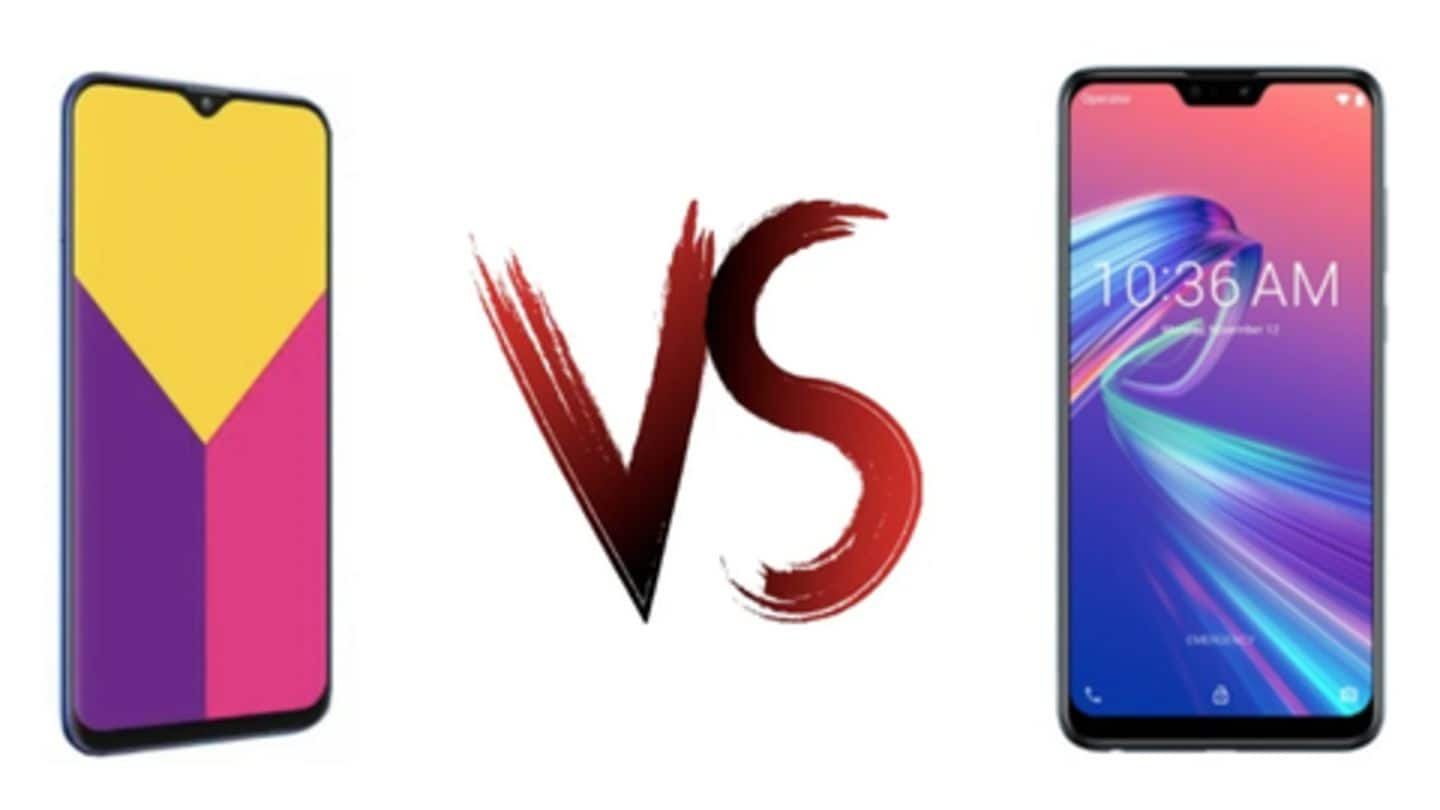
Galaxy M20 v/s ZenFone Max Pro M2: The better option?
What's the story
In the sub-Rs. 15,000 segment, the ASUS ZenFone Max Pro M2 continues to be a best seller for its unbeatable mix of design, specifications, and price.
However, with a newer design, mid-level internals, and an attractive price tag, Samsung's all-new Galaxy M20 challenges the status quo.
But does it have enough to disrupt the budget smartphone segment?
Here's our spec-wise comparison.
Design
At a glance
Up front, both the phones sport an edge-to-edge notched display. However, with a significantly smaller display cut-out, the Galaxy M20 offers a screen-to-body of over 90% as compared to near 83% on the ZenFone Max M2 Pro.
Further, both phones have a glossy finish on the back panel, physical rear-mounted fingerprint scanner, and vertically-stacked dual rear-camera setup.
Winner: Galaxy M20 for its Infinity-V design.
Display
All about the screen
The ZenFone Max Pro M2 features a 6.3-inch full-HD+ (1080x2280 pixels) display with a 19:9 aspect ratio.
In comparison, the Galaxy M20 sports a 6.3-inch full-HD+ (1080x2340 pixels) with a taller 19.5:9 aspect.
And though the Samsung contender has a marginally crispier display, the ASUS smartphone comes with the industry-leading Gorilla Glass 6 protection which is a segment-first feature.
Winner: ZenFone Max Pro M2.
Primary Camera
For the shutterbugs
The dual rear-camera setup on ZenFone Max Pro M2 comprises a 12MP (f/1.8) Sony IMX486 sensor and a 5MP secondary sensor.
In comparison, Galaxy M20 comes with a dual rear-camera setup having a 13MP (f/1.9) main sensor, paired with a 5MP ultra-wide angle sensor.
The ASUS phone provides a slightly wider aperture whereas Samsung's handset offers a wide-angle sensor.
Winner: You be the judge.
Selfie Camera
For the love of selfies
In the selfie game, the ZenFone Max Pro M2 has a clear advantage, thanks to its 13MP (f/2.0) selfie camera with a dedicated LED flash module.
In comparison, the Galaxy M20 settles for an 8MP (f/2.0) sensor which is supported by a display flash.
Winner: ASUS ZenFone Max Pro M2 for its better optics.
Internals
All the important stuff
Under the hood, the ZenFone Max Pro M2 comes with a Qualcomm Snapdragon 660 processor, 3GB/4GB/6GB of RAM and 32GB/64GB of internal storage (expandable upto 2TB).
On the other hand, the Galaxy M20 is powered by an Exynos 7904 chipset, coupled with 3GB/4GB RAM and 32GB/64GB of storage (expandable up to 512GB).
Winner: ZenFone Max Pro M2 for its more powerful and efficient chipset.
Sensors & Software
Lifeblood of your smartphone
Both the phones pack a standard array of sensors including an ambient light sensor, compass, gravity sensor, gyroscope, and a proximity sensor.
They also offer a rear-mounted fingerprint sensor and camera-based Face Unlock feature.
Further, in terms of software, the Galaxy M20 runs Android Oreo-based Samsung Experience 9.5 UX whereas ZenFone Max Pro M2 runs stock Android Oreo.
Winner: Tie.
Battery & Connectivity
Staying connected
In terms of connectivity, both the phones support dual-SIMs, 4G VoLTE, Wi-Fi, Bluetooth 5.0, GPS/A-GPS, and a 3.5mm headphone jack.
However, the ZenFone Max Pro M2 has a micro-USB port and supports 10W fast charging while the Galaxy M20 offers a USB Type-C port with support for 15W fast charging.
Further, in terms of battery, both phones pack a 5,000mAh battery.
Winner: Galaxy M20.
Information
Pricing: The key factor
ASUS ZenFone Max Pro M2 costs Rs. 12,999 for the 3GB/32GB variant, Rs. 14,999 for the 4GB/64GB model, and Rs. 16,999 for the 6GB/64GB option. In comparison, Galaxy M20 is priced at Rs. 10,990 for the 3GB/32GB variant and Rs. 12,990 for the 4GB/64GB model.
Our result
How things stack up!
If you can make do with the odd notch on ZenFone Max Pro M2, the phone is a solid buy considering its good cameras, powerful chipset, Gorilla Glass 6 protection, and dependable battery.
However, the Galaxy M20 offers a newer design, sharper display, decent cameras, faster charging and is cheaper by over Rs. 2,000.
Winner: Samsung Galaxy M20, the new affordable, powerful all-rounder.